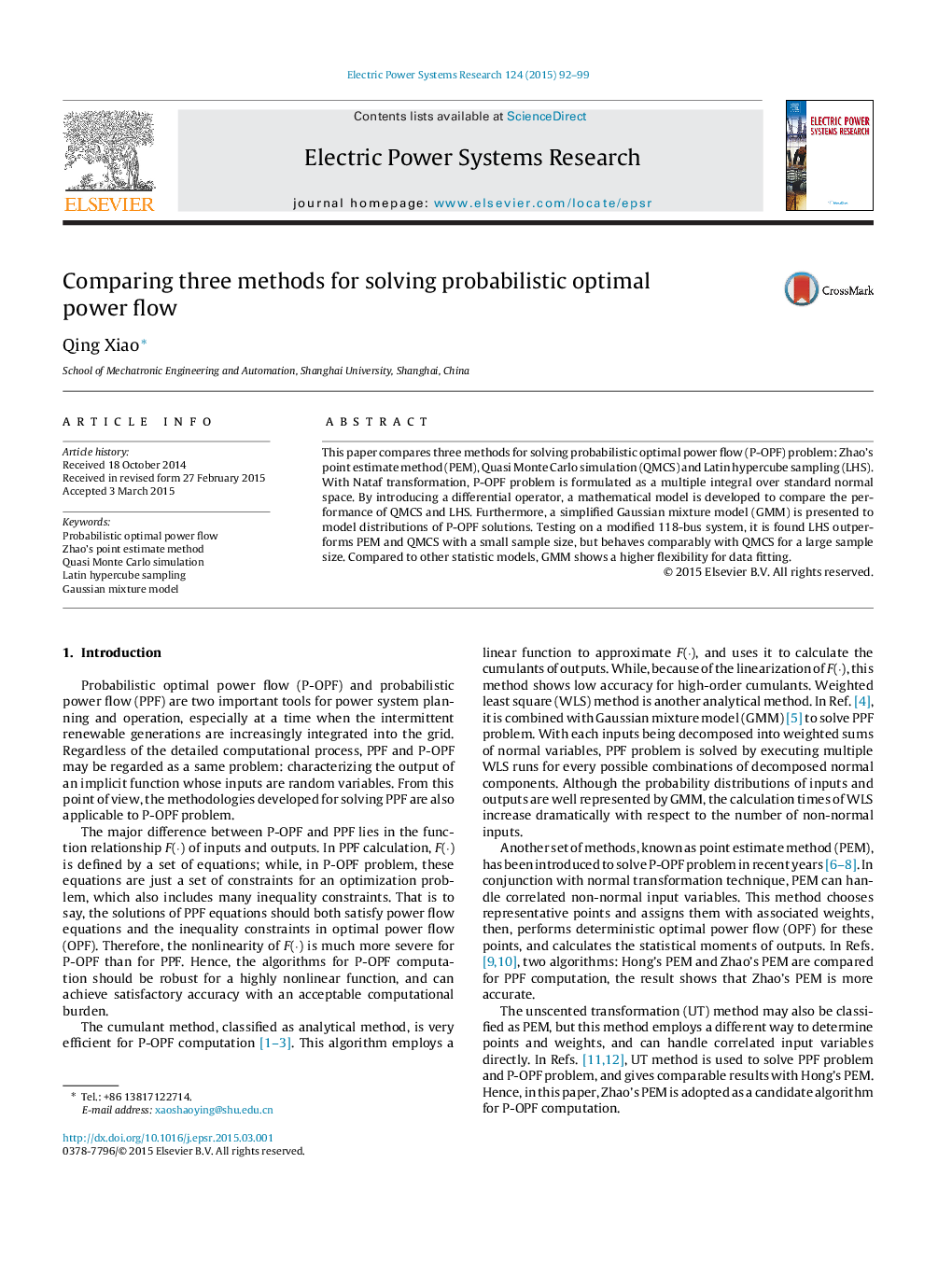| Article ID | Journal | Published Year | Pages | File Type |
|---|---|---|---|---|
| 7112671 | Electric Power Systems Research | 2015 | 8 Pages |
Abstract
This paper compares three methods for solving probabilistic optimal power flow (P-OPF) problem: Zhao's point estimate method (PEM), Quasi Monte Carlo simulation (QMCS) and Latin hypercube sampling (LHS). With Nataf transformation, P-OPF problem is formulated as a multiple integral over standard normal space. By introducing a differential operator, a mathematical model is developed to compare the performance of QMCS and LHS. Furthermore, a simplified Gaussian mixture model (GMM) is presented to model distributions of P-OPF solutions. Testing on a modified 118-bus system, it is found LHS outperforms PEM and QMCS with a small sample size, but behaves comparably with QMCS for a large sample size. Compared to other statistic models, GMM shows a higher flexibility for data fitting.
Related Topics
Physical Sciences and Engineering
Energy
Energy Engineering and Power Technology
Authors
Qing Xiao,
